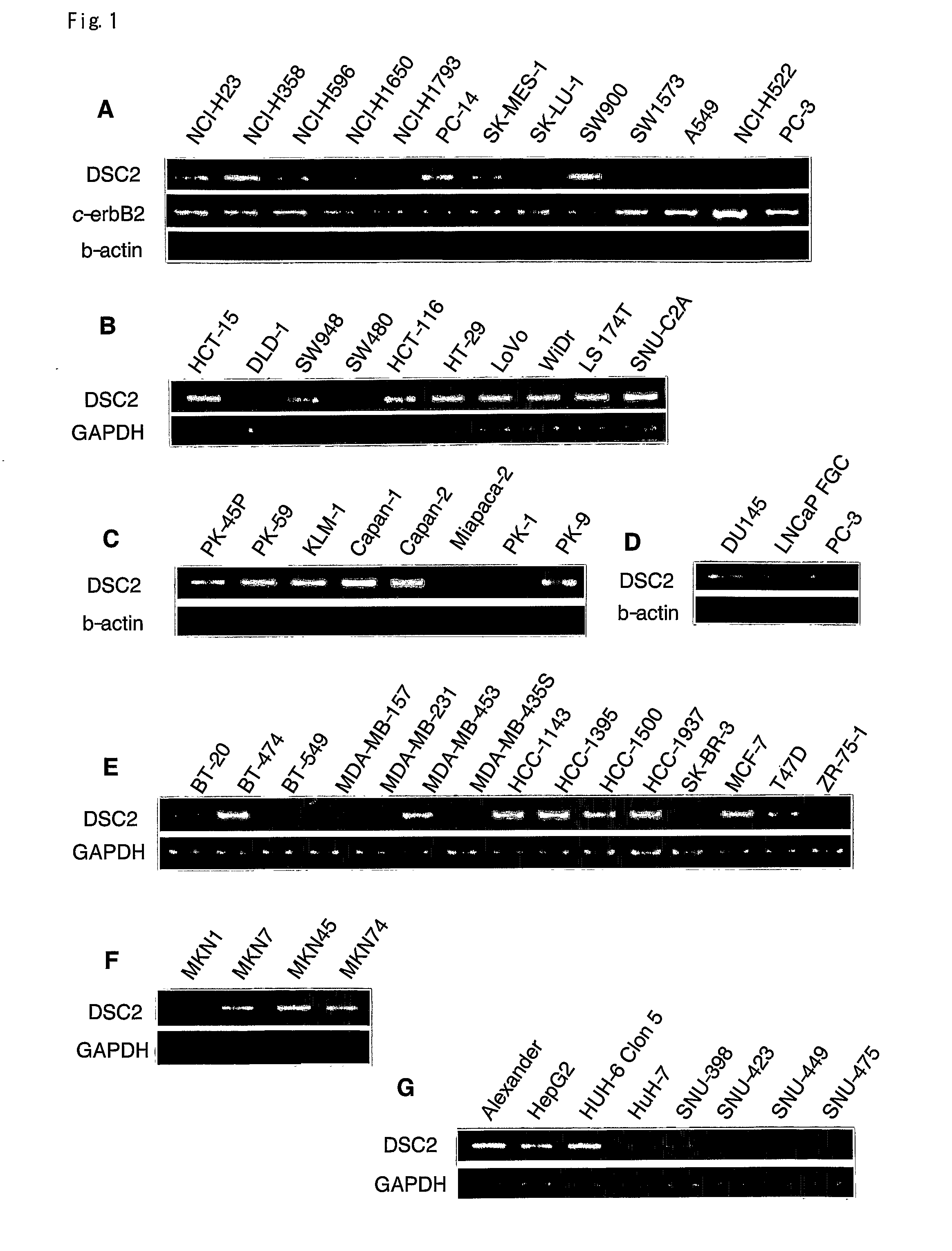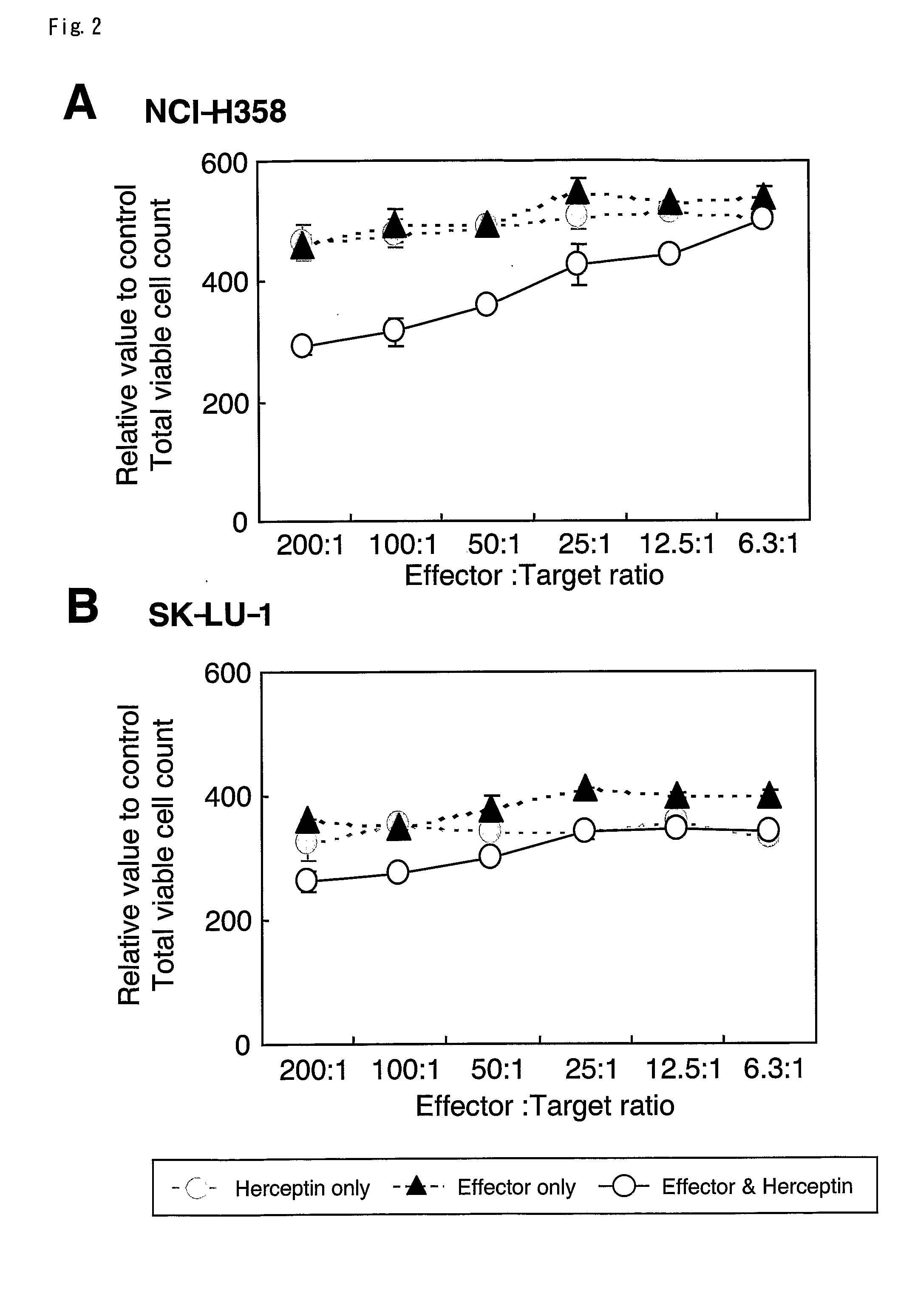Methods for Damaging Cells Using Effector Function of Anti-Dsc2 Antibody
a technology of anti-dsc2 antibody and effector function, which is applied in the field of anti-dsc2 antibodies, can solve the problems of colorectal carcinoma being a leading cause of cancer death in developed countries, the therapeutic action of pharmaceutical agents has not progressed beyond the point of being able to prolong the survival of advanced nsclc patients to a certain extent, and the side effects of treatment are sever
- Summary
- Abstract
- Description
- Claims
- Application Information
AI Technical Summary
Benefits of technology
Problems solved by technology
Method used
Image
Examples
Embodiment Construction
[0043]Conditions required for destroying cancer cells using effector function of an antibody are, for example, as follows:[0044](a) expression of large numbers of antigenic molecules on the membrane surface of target cancer cells;[0045](b) uniform distribution of antigens within target cancerous tissues; and[0046](c) lingering of antigens bound to antibodies on the cell surface for a long time.
[0047]More specifically, for example, antigens recognized by antibodies are required to be expressed on the surface of the cell membrane of target cancer cell. In addition, it is preferable that the ratio of antigen-positive cells is as high as possible in cells forming cancerous tissues. For example, an ideal situation may be where all target cancer cells in the objective tissue are positive to that antigen. When an antigen existing only in a portion of a cancer cell population of the objective tissue is used as the target, no clinical therapeutic effect may be expected for antibodies against...
PUM
| Property | Measurement | Unit |
|---|---|---|
| weight | aaaaa | aaaaa |
| volume | aaaaa | aaaaa |
| volume | aaaaa | aaaaa |
Abstract
Description
Claims
Application Information
 Login to View More
Login to View More - R&D
- Intellectual Property
- Life Sciences
- Materials
- Tech Scout
- Unparalleled Data Quality
- Higher Quality Content
- 60% Fewer Hallucinations
Browse by: Latest US Patents, China's latest patents, Technical Efficacy Thesaurus, Application Domain, Technology Topic, Popular Technical Reports.
© 2025 PatSnap. All rights reserved.Legal|Privacy policy|Modern Slavery Act Transparency Statement|Sitemap|About US| Contact US: help@patsnap.com



